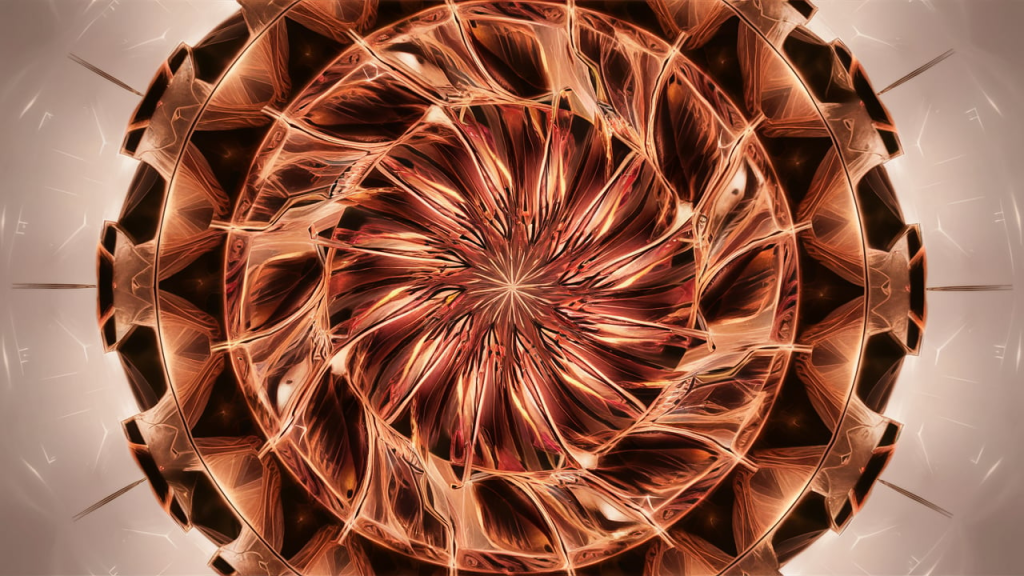Ever notice how some art grabs your attention and won’t let go? That’s often the magic of radial symmetry at work.
In this article, I’ll explain radial symmetry and how it appears in paintings, sculptures, and buildings worldwide. If you’ve ever wanted to create more balanced, eye-catching art, you’re in the right place.
As an art teacher with 10+ years of experience, I’ve helped hundreds of students unlock this powerful design principle. Even complete beginners can use these techniques to make striking artwork.
Whether you’re looking to:
- Understand why certain designs feel so satisfying
- Recognize radial patterns in famous artwork
- Create your radial symmetry pieces from scratch
You’ll find practical answers here. The best part? You don’t need fancy supplies or years of training to get started.
What is Radial Symmetry?
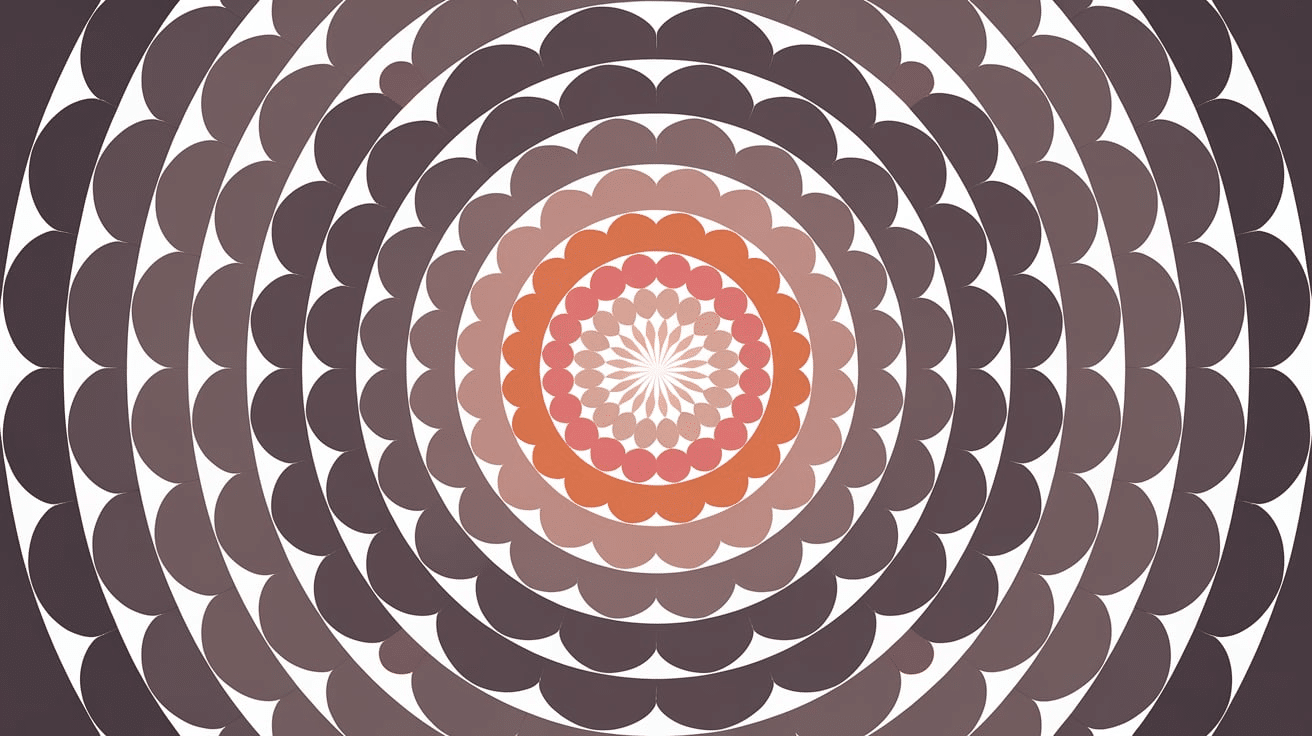
Radial symmetry happens when elements repeat evenly around a central point—like spokes on a wheel or petals on a daisy.
Think of it as taking a slice of design and copying it multiple times around a circle. Each section mirrors the others perfectly.
Unlike bilateral symmetry (where the left matches the right), radial symmetry creates a complete 360° effect. It pulls your eye to the center and then radiates outward in all directions.
How Radial Symmetry Works in Art
Artists use radial symmetry to create:
- Balance – every section has equal visual weight
- Movement – your eye naturally follows the circular pattern
- Unity – separate elements become one cohesive whole
- Focus – attention gets drawn to the center point
When I look at radial designs, my eyes can’t help but travel inward to the center, then outward along each repeating element. This creates a dynamic viewing experience that static designs can’t match.
The mathematical precision behind radial symmetry is what gives it power. Each element is placed at the same distance from the center, creating perfect rotation around that point.
What happens in a radial design:
- The center point acts as an anchor for the entire composition.
- The space is divided into equal sections (like cutting a pie).
- Elements repeat at consistent intervals around this center.
- Your brain recognizes the pattern and expects the repetition to continue.
This structure creates what artists call “visual rhythm” – a steady, predictable beat that carries your eye around the piece. The more repetitions there are, the stronger this rhythm becomes.
Think of it like a pinwheel spinning or ripples expanding from a stone dropped in water. This sense of motion exists even in completely static artwork.
You’ll often see artists use radial symmetry with other techniques:
- Gradients that change as they move away from the center
- Scale variations where elements get larger or smaller
- Color progression that shifts around the circle
These additions create extra visual interest while maintaining the powerful radial structure.
Radial Symmetry in Different Art Forms
This powerful design principle shows up across virtually all artistic disciplines.
Radial Symmetry in Painting
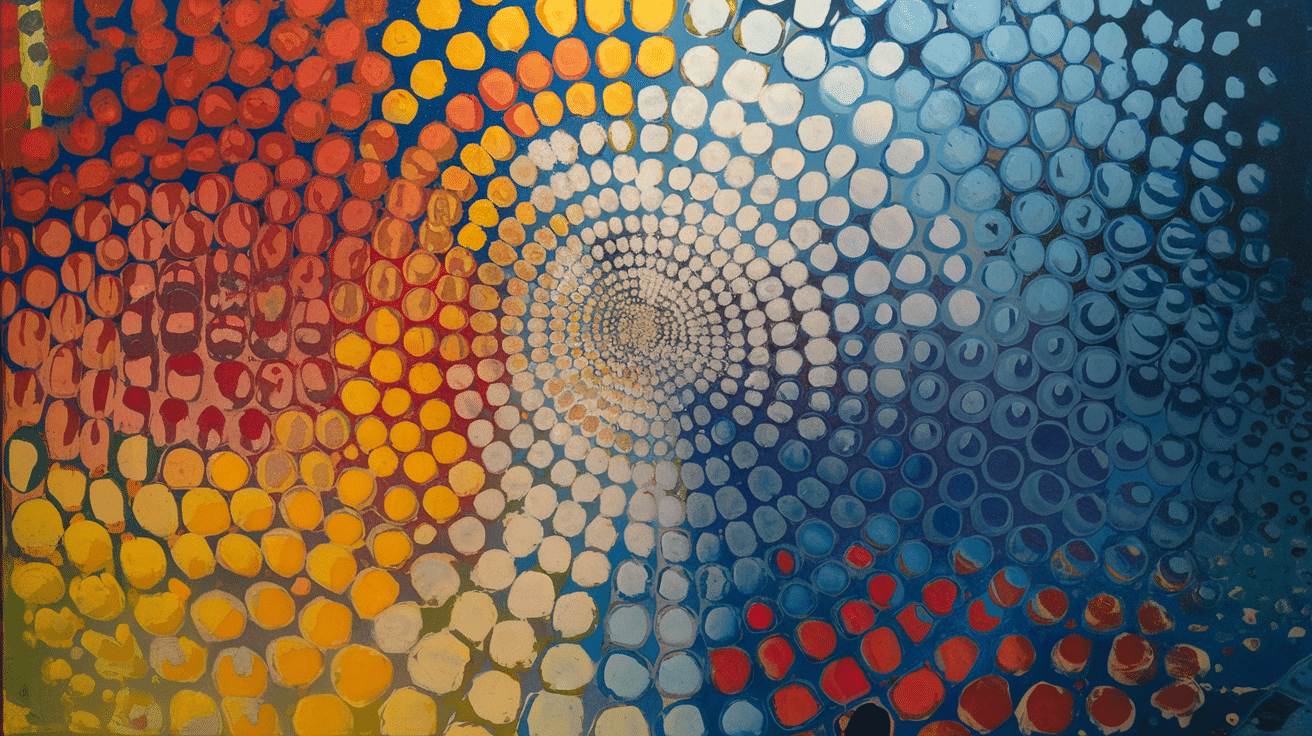
Mandalas represent one of the oldest and most recognized uses of radial symmetry in painting. These intricate designs originated in Hindu and Buddhist traditions but have spread worldwide.
Modern painters use radial symmetry to create:
- Abstract compositions with perfect mathematical precision
- Optical illusions that seem to spin or pulsate
- Focal points that draw viewers into their work
Georgia O’Keeffe’s flower paintings often use subtle radial symmetry, zooming in on the natural patterns of petals around a center.
Radial Symmetry in Sculpture
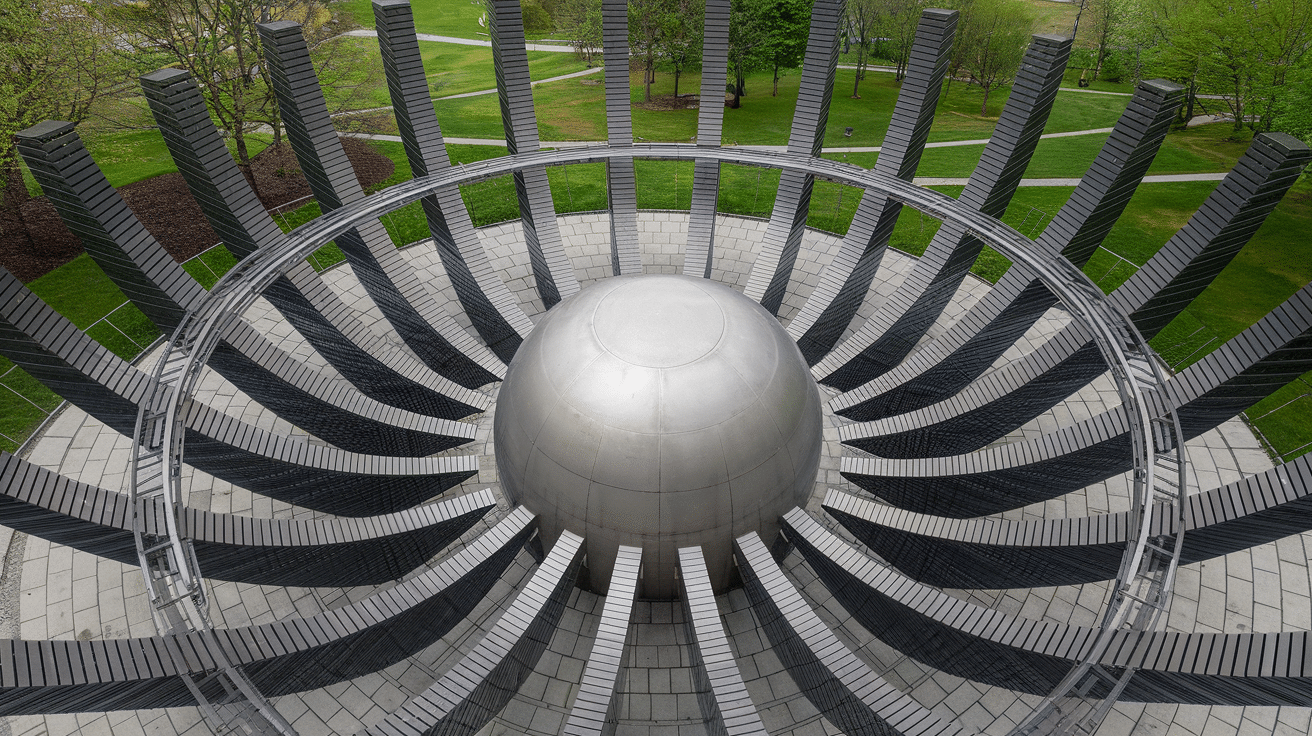
Sculptors harness radial symmetry to create pieces you can appreciate from any angle.
I once saw a stunning metal sculpture at a park—it featured twelve identical wings extending from a central sphere. As I walked around it, the perspective shifted but remained perfectly balanced.
Some examples include:
- Wind sculptures that spin in perfect harmony
- Religious icons with radiating elements
- Modern abstract pieces built around central cores
Radial Symmetry in Architecture
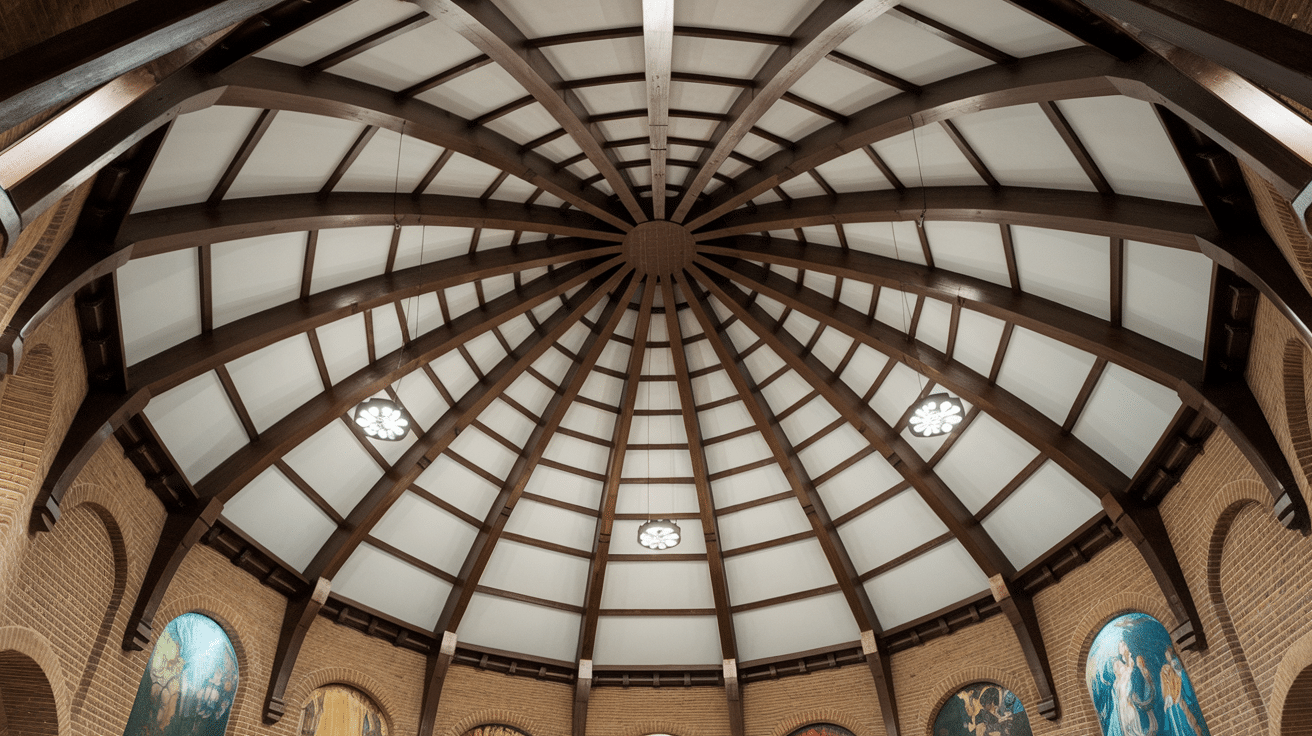
Look up! Architecture offers some of the most breathtaking examples of radial symmetry.
Gothic cathedral rose windows masterfully use this principle. Their colorful glass patterns radiate from a central point, creating a mesmerizing effect when sunlight streams through.
Other architectural examples include:
- Domed ceilings with radiating support beams
- Circular buildings with evenly spaced columns
- Modern skyscrapers viewed from below
- Spiral staircases winding around a central axis
Why Artists Use Radial Symmetry
Artists don’t just use radial symmetry because it looks cool (though it definitely does).
- It Creates Order from Chaos: The human brain loves patterns, and radial symmetry offers perfect mathematical balance.
- It Reflects Nature: Radial symmetry appears constantly in the natural world, from flowers to starfish to the human eye.
- It Has Symbolic Power: Many cultures associate radial designs with the sun, wholeness, unity, and spiritual concepts.
- It Directs Attention: When I need to make a specific point at the center of my composition, radial symmetry naturally guides the viewer’s eye right where I want it.
How to Create Radial Symmetry in Your Art
Ready to try radial symmetry yourself? You don’t need special skills—follow these steps:
- Gather your materials: Paper, pencil, compass, and something to add color (markers, paint, etc.).
- Draw your circle: Use a compass to create a perfect circle on your paper. Mark the center point clearly.
- Divide your circle: Draw lines from the center to the edge, dividing your circle into equal sections (try 6 or 8 to start).
- Create your repeating element: Draw a simple pattern or design in just one section. Don’t make it too complex for your first attempt.
- Repeat precisely: Copy that same element into each section, maintaining the same distance from the center.
- Add color if desired: You can use the same colors throughout for unity or create patterns with different colors.
- Step back and observe: Notice how your eye naturally travels around your creation.
The beauty of this technique is that even simple elements can create stunning results when repeated in radial symmetry.
Conclusion
Radial symmetry opens doors to creating art that naturally draws people in. I’ve seen complete beginners create stunning pieces using this simple principle.
Start small—even a basic design repeated around a center point can look impressive. The secret isn’t complexity but consistency.
Nature has used this pattern for millions of years in flowers, sea creatures, and snowflakes. There’s a reason it catches our eye so effectively.
Whether you’re painting, drawing, or sculpting, adding radial elements can transform your work from flat to fascinating. Follow the steps I’ve shared to give it a try this weekend.
Ready to see your art spin into something spectacular?
Frequently Asked Questions
Why Does Radial Symmetry Feel so Satisfying to Look At?
Our brains are wired to find patterns that please us. Radial symmetry creates the perfect mathematical balance that triggers our reward systems.
Can I Combine Radial Symmetry with Other Design Principles?
Absolutely! Try mixing radial elements with contrasting colors or textures for even more visual impact.
What’s the Easiest Medium for Beginners to Practice Radial Symmetry?
Digital apps with symmetry tools are easiest, but paper and pencil with a compass work great too. Even folding paper can create simple radial designs.
How Can Photographers Incorporate Radial Symmetry?
Look for natural radial subjects (flowers, architecture) or create compositions with subjects arranged in a circle around a central point.
Does Radial Symmetry Work for All Art Styles or Only Geometric Ones?
It works with any style! Even loose, flowing art benefits from radial arrangement—just look at Van Gogh’s “Starry Night” with its swirling, radial energy.


